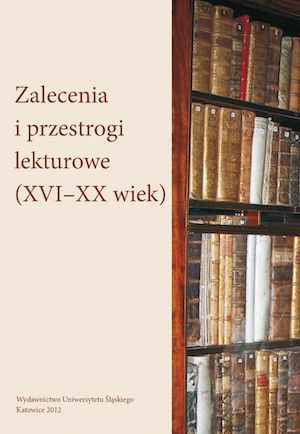Biblioteka szkoły powszechnej miejscem edukacji czytelniczej i bibliotecznej (1918—1939)
A library of a state school as a place of reading and library education (1918—1939)
Author(s): Hanna Langer
Subject(s): Language and Literature Studies
Published by: Wydawnictwo Uniwersytetu Śląskiego
Summary/Abstract: Changes in pedagogy happening at the beginning of the 20th century influenced among others thedevelopment of school libraries.Their condition, especially in the first years after regaining independenceby Poland, was catastrophic. Among others it was actions taken by the Ministry of Religious and PublicEnlightenment that was to bring about a proper functioning of libraries. A commission responsible forevaluation of books for school youth was appointed in 1923 and an Instruction concerning libraries for theyouth in state schools was released in 1925, in which it was underlined that a well‑furnished library is ne‑cessary for a proper functioning of school and realization of a didactic‑educational programme, includingthe development of reading. Reading and library education was treated as one of themost important dutiesof a civic youth education. It was to involve such elements as using information publishing houses, cata‑logues and library files,mastering the ability to choose a proper book, getting ready for a self‑developingwork, including the ability of proper note taking, and was to be connected with teaching curricula.Thebest place for a reading and library education was a library, a reading room with a free access to shelves.As the school libraries usually did not have proper book collections in particular, cooperation with pub‑lic libraries is what was suggested. It developed best inWarsaw where a chain of best functioning publiclibraries for children functioned at the end of the 1930s.
Book: Zalecenia i przestrogi lekturowe (XVI–XX wiek)
- Page Range: 171-190
- Page Count: 20
- Publication Year: 2012
- Language: Polish
- Content File-PDF

